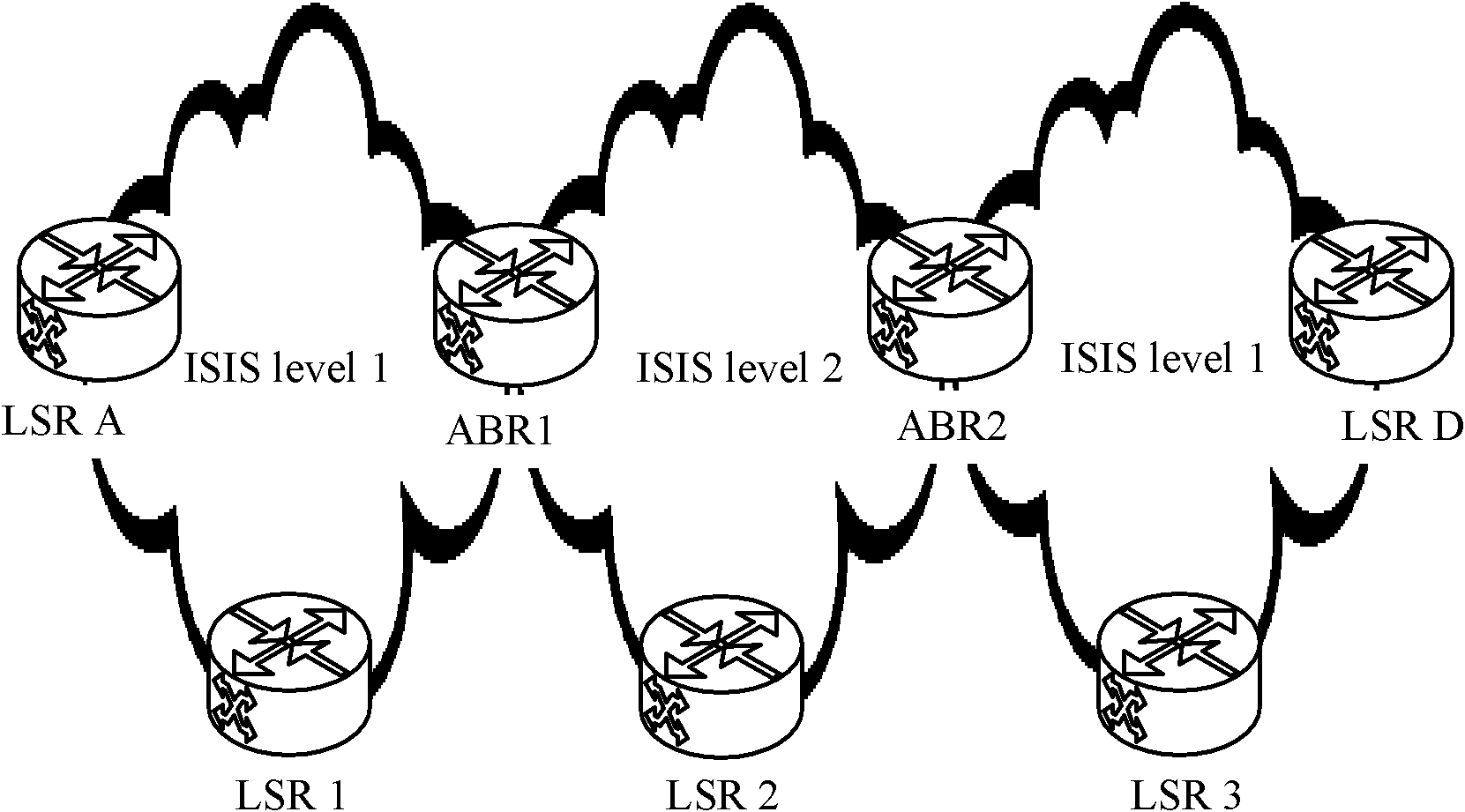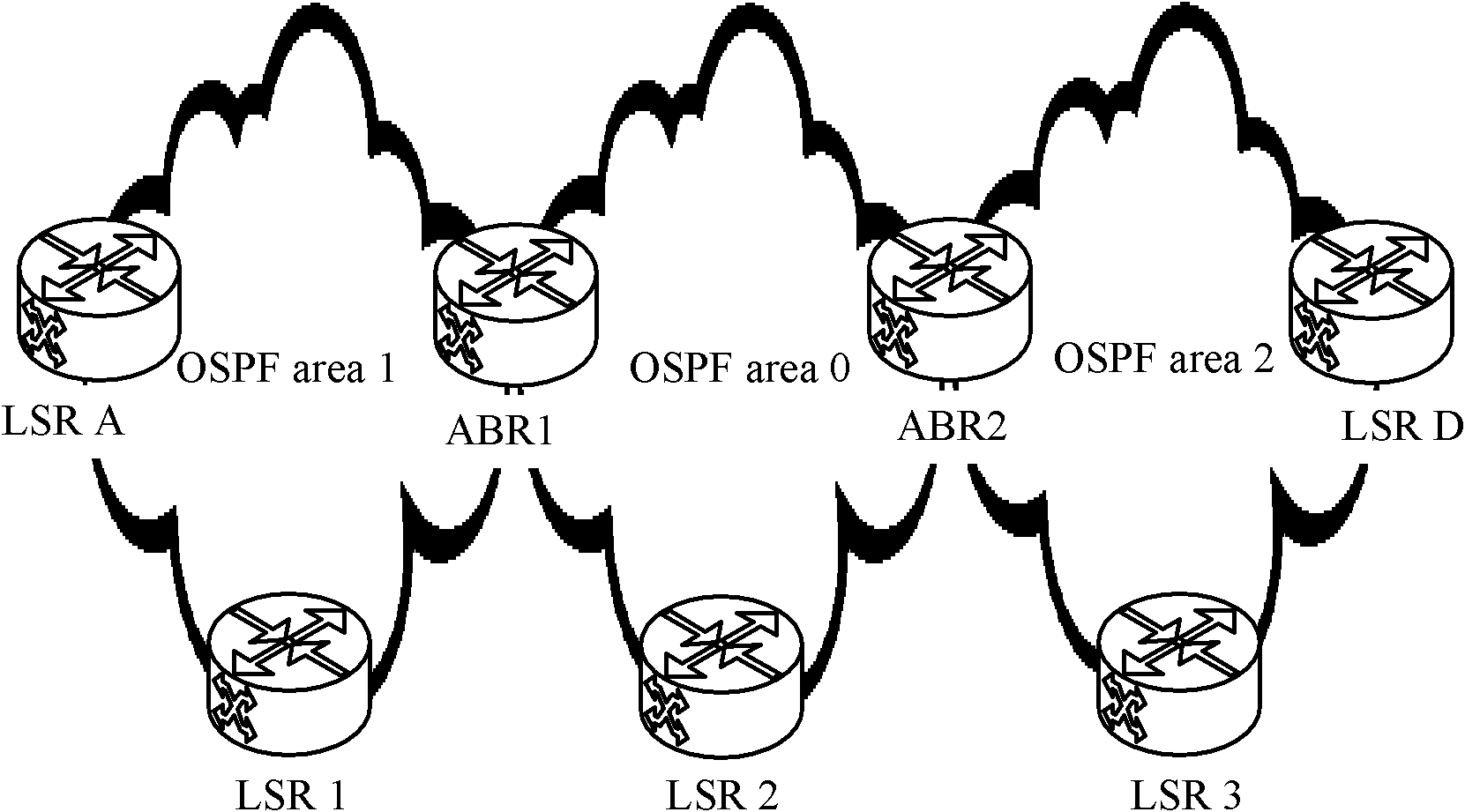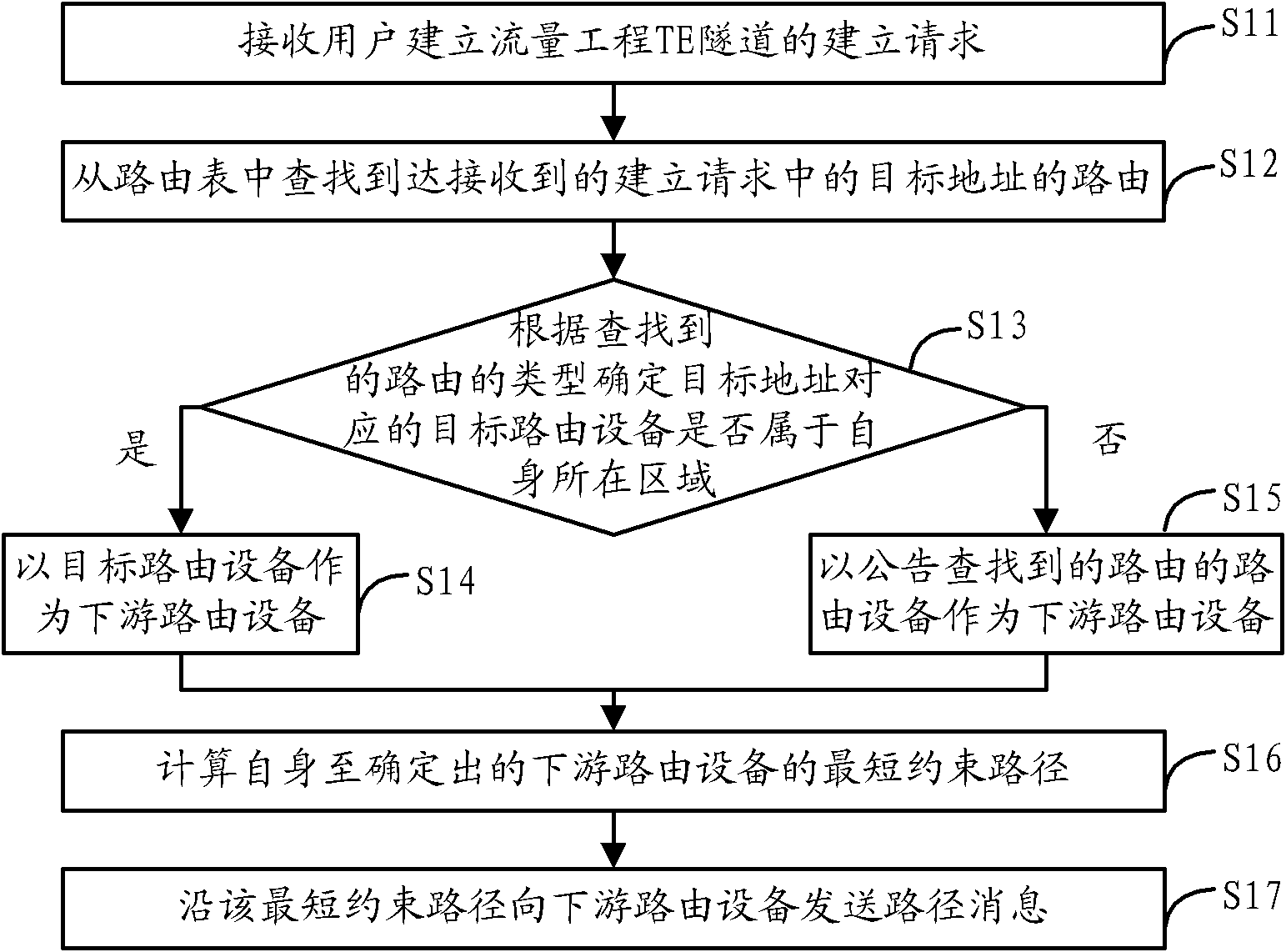Method, system and device for building trans-regional flow engineering tunnel
A technology of traffic engineering and tunnel establishment, which is applied in the field of communication, and can solve problems such as inability to automatically configure intermediate nodes of TE tunnels, slow establishment of TE tunnels, and large investment in human resources.
- Summary
- Abstract
- Description
- Claims
- Application Information
AI Technical Summary
Problems solved by technology
Method used
Image
Examples
Embodiment 1
[0151] The method for establishing a cross-regional traffic engineering tunnel provided by Embodiment 1 of the present invention is aimed at realizing the establishment of a cross-regional TE tunnel for the MPLS system architecture using the ISIS protocol. The structure example of the system is as follows Figure 6 As shown, the system includes: three non-backbone areas level1 and one backbone area level2, and several routing devices, which may be label switching routers LSR.
[0152] Specifically Figure 6 The backbone area, the first non-backbone area, the second non-backbone area, and the third non-backbone area shown in , and the LSRA and LSR 1 that belong only to the first non-backbone area, and the LSRD and LSR that only belong to the second backbone area LSR 2, LSR 3 belonging only to the third non-backbone area, ABR1 belonging to the backbone area and the first non-backbone area, ABR2 belonging to the backbone area and the second non-backbone area, and ABR belonging to...
Embodiment 2
[0202] The method for establishing a cross-regional traffic engineering tunnel provided by Embodiment 2 of the present invention is aimed at realizing the establishment of a cross-regional TE tunnel for the MPLS system architecture using the OSPF protocol. The structure example of the system is as follows Figure 8 As shown, the system includes: one backbone area, three non-backbone areas, and several routing devices, which may be label switching routers LSR.
[0203] Specifically Figure 8 The backbone area (area0), non-backbone area (area1, area2, area3) shown in , and LSRA and LSR 1 only in area1, LSRD and LSR 2 only in area2, and only in area3 LSR 3, and ABR1 belonging to area0 and area1, ABR2 belonging to area0 and area2, and ABR3 belonging to area0 and area3. Of course, in the actual network deployment, the non-backbone areas are not limited to three and can be set arbitrarily, as long as each non-backbone area is directly or indirectly connected to the backbone area ar...
PUM
 Login to View More
Login to View More Abstract
Description
Claims
Application Information
 Login to View More
Login to View More - R&D
- Intellectual Property
- Life Sciences
- Materials
- Tech Scout
- Unparalleled Data Quality
- Higher Quality Content
- 60% Fewer Hallucinations
Browse by: Latest US Patents, China's latest patents, Technical Efficacy Thesaurus, Application Domain, Technology Topic, Popular Technical Reports.
© 2025 PatSnap. All rights reserved.Legal|Privacy policy|Modern Slavery Act Transparency Statement|Sitemap|About US| Contact US: help@patsnap.com



